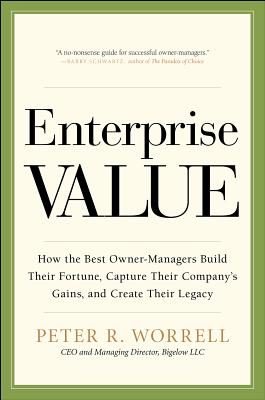
A solvent company is one whose current assets exceed its current liabilities, the same applies to an individual or any entity. Liquidity refers to the ability of a company to pay off its short-term debts; that is, whether the current liabilities can be paid with the current assets on hand. Liquidity also measures how fast a company is able to covert its current assets into cash. Liquidity looks at the short-term assets and liabilities to determine if a business has the cash or equivalents to pay short term debts. The other major thing to worry about when looking at a company’s financial statements is whether they are being truthful.
Continued solvency can also be a concern when a business loses a lawsuit from which the damages are considered to be significant, or regulatory approval is not obtained for a business venture. Current liabilities refers to money that must be paid within the next 12 months. Not all of the company’s basic inventory is included in current assets – only such assets as money owed to it by other firms and individuals plus marketable securities. For example, a company with a solvency ratio of 1.2 is solvent, while one whose ratio is 0.9 is technically insolvent.
Small Business Loan Options in Ohio
As well, the cash flow statement is going to provide insights into the history that the company has of paying its debt. It will show if there are lots of outstanding debts or if payments are regularly made to reduce the debt liability it has. The solvency of a business is assessed by looking at its balance sheet and cash flow statement. When lenders consider your small business loan application they are looking at the financial information like your solvency ratio and your liquidity to make those decisions. Long-term planning requires that a company be capable of remaining solvent in order to continue being a well-operated organization.
Liquidity measures the ability to meet financial obligations payable within 12 months (like a line of credit or short-term vehicle lease). A high solvency ratio is usually good as it means the company is usually in better long-term health compared to companies with lower solvency ratios. On the other hand, a solvency ratio that is too high may show that the company is not utilizing potentially low-cost debt as much as it should. While solvency is mostly used as a barometer of financial health and higher is good, it is also used to evaluate some of the operational efficiencies where higher is not always better. When the management of a company is deciding whether to finance operations with additional debt or equity, the risk of insolvency is one of its key considerations. Solvency is the ability of an organization to pay for its long-term obligations in a timely manner.
What Is a Solvency Ratio, and How Is It Calculated?
The equity ratio, or equity-to-assets, shows how much of a company is funded by equity as opposed to debt. The lower the number, the more debt a company has on its books relative to equity. Solvency relates directly to a business’s balance sheet, which shows the relationship of assets to liabilities and equity. Implementing a solvency analysis can help dive deeper into the company and highlight potential risks that might indicate a potential for insolvency.

Liquidity can be seen as being able to pay something within a year, versus solvency, which would cover anything farther out. A company may be able to meet all of its debt in the long term and still not be able to turn a profit. Solvency refers to a company’s ability to meet its financial obligations in the long run. The more solvent a company is, the better equipped it likely is to sustain operations for a long time into the future. This occurs if it has enough cash to meet its current or near-term debts, however, all of its assets are worth less than the total amount of money owed. Viability and solvency are both necessary for financial health, but they are not the same thing.
How to Calculate the Solvency Ratio
If a business has too many bills to pay and not enough assets to pay those bills, it will not survive. One of the primary objectives of any business is to have enough assets to cover its liabilities. Along with liquidity and viability, solvency enables businesses to continue operating.
Why Fitch downgraded US credit rating from AA+ to AAA – Vox.com
Why Fitch downgraded US credit rating from AA+ to AAA.
Posted: Wed, 02 Aug 2023 17:55:00 GMT [source]
Some industries operate with a large amount of debt, but they are not failing due to this. In a field like pharmaceuticals, research and development is very capital intensive and the gains can take years to be realized. A company is solvent when the total value of its assets (the sum of everything of value it owns) is higher than the value of its liabilities (the sum of all its debts). The Interest Coverage Ratio is a much more nuanced ratio and it measures a company’s ability to meet its scheduled interest payments.
What is Liquidity?
When analyzing these numbers you will be able to determine if a company is running efficiently and if their long-term operations will be profitable. Don’t get trapped by putting too much weight into total revenue alone, it is only a piece that can be explained by the other fiscal solvency means numbers. A company can generate a large amount of total revenue, but if their expenses are too high they won’t be profitable. Likewise, if a company’s output is high, but their marginal revenue is low, it can appear that they’re more successful than they truly are.
If it cannot marshal the resources to do so, then an entity cannot continue in business, and will likely be sold or liquidated. Solvency is a core concept for lenders and creditors, who use financial ratios and other financial information to determine whether a prospective borrower has the resources to pay for its obligations. When looking into the financial health of a company, one of the biggest things to consider is its risk of insolvency. This is because it measures how well a company can sustain its operations over time. As well, the solvency of a company is able to help you determine whether or not it has growth capabilities.
Opinion Wonking Out: Is a U.S. Debt Crisis Looming? Is It Even … – The New York Times
Opinion Wonking Out: Is a U.S. Debt Crisis Looming? Is It Even ….
Posted: Fri, 04 Aug 2023 18:50:57 GMT [source]
Improve your business credit history through tradeline reporting, know your borrowing power from your credit details, and access the best funding – only at Nav. The federal funds rate is the interest rate banks charge each other for overnight loans — It’s one lever the Federal Reserve uses to stabilize the economy. Accounts Receivable are funds owed to a company by customers who purchased goods or services on credit.
In order to assess the solvency of a business, you need to first look at its cash flow statement and balance sheet. The balance sheet is going to give an overview of the assets and liabilities that it holds. When a company has a realizable value of assets that are greater than liabilities, it’s considered to be solvent.
- The first is its trading solvency and overall liquidity, which measures whether it’s able to pay its debts when they’re due.
- You should be aware of this method when reading into a company’s balance sheet to determine their solvency; they could have an asset whose true value is much different than listed.
- Solvency ratios measure a company’s cash flow, which includes non-cash expenses and depreciation, against all debt obligations.
If a company is re-investing a lot of their cash into the business, you could expect them to increase revenues or decrease expenses in the future. At the same time, if money is constantly flowing out of the business, due to excessive debt obligations or potential legal troubles, it could be considered problematic. Everyone in the company knows approximately how much money is coming in and when it’s arriving. If the company foresees a shortfall of cash, they can reallocate resources to remedy the problem. By projecting cash flows, a company is able to acquire debt much more confidently.
For example, a patent that is pending expiration can create some risks since competitors might try to produce their own version of the patent. Solvency ratio levels vary by industry, so it is important to understand what constitutes a good ratio for the company before drawing conclusions from the ratio calculations. Ratios that suggest lower solvency than the industry average could raise a flag or suggest financial problems on the horizon. Ty Kiisel is a Main Street business advocate, author, and marketing veteran with over 30 years in the trenches writing about small business and small business financing. Keep in mind, other fees such as trading (non-commission) fees, Gold subscription fees, wire transfer fees, and paper statement fees may apply to your brokerage account.
Assets minus liabilities is the quickest way to assess a company’s solvency. The solvency ratio calculates net income + depreciation and amortization / total liabilities. If your solvency ratio is lower than you’d like, it’s possible to stay afloat for a time, but if your cash flow (liquidity) is struggling, it’s very difficult for a business to survive. When the ratio is 50% or higher it can indicate that a company has been more conservative in management, which means they have the money to meet their financial obligations long-term.
Certain complex options strategies carry additional risk, including the potential for losses that may exceed the original investment amount. This information is educational, and is not an offer to sell or a solicitation of an offer to buy any security. This information is not a recommendation to buy, hold, or sell an investment or financial product, or take any action. This information is neither individualized nor a research report, and must not serve as the basis for any investment decision. Before making decisions with legal, tax, or accounting effects, you should consult appropriate professionals.

Book ValueThe book value formula determines the net asset value receivable by the common shareholders if the company dissolves. It is calculated by deducting the preferred stocks and total liabilities from the total assets of the company. Solvency is measured using equity ratio, debt to equity ratio, debt to asset ratio, financial leverage ratio, and interest coverage ratio. Solvency and liquidity fit together hand-in-glove when determining if your company has the ability to service debt and should be considered together if you’re anticipating a small business loan. They want to determine in addition to solvency, if you have the cash flow, or the liquidity, you will need to make each and every periodic payment. You can obtain the data necessary to assess the solvency of your company or another company by looking at the company’s financial statements.

